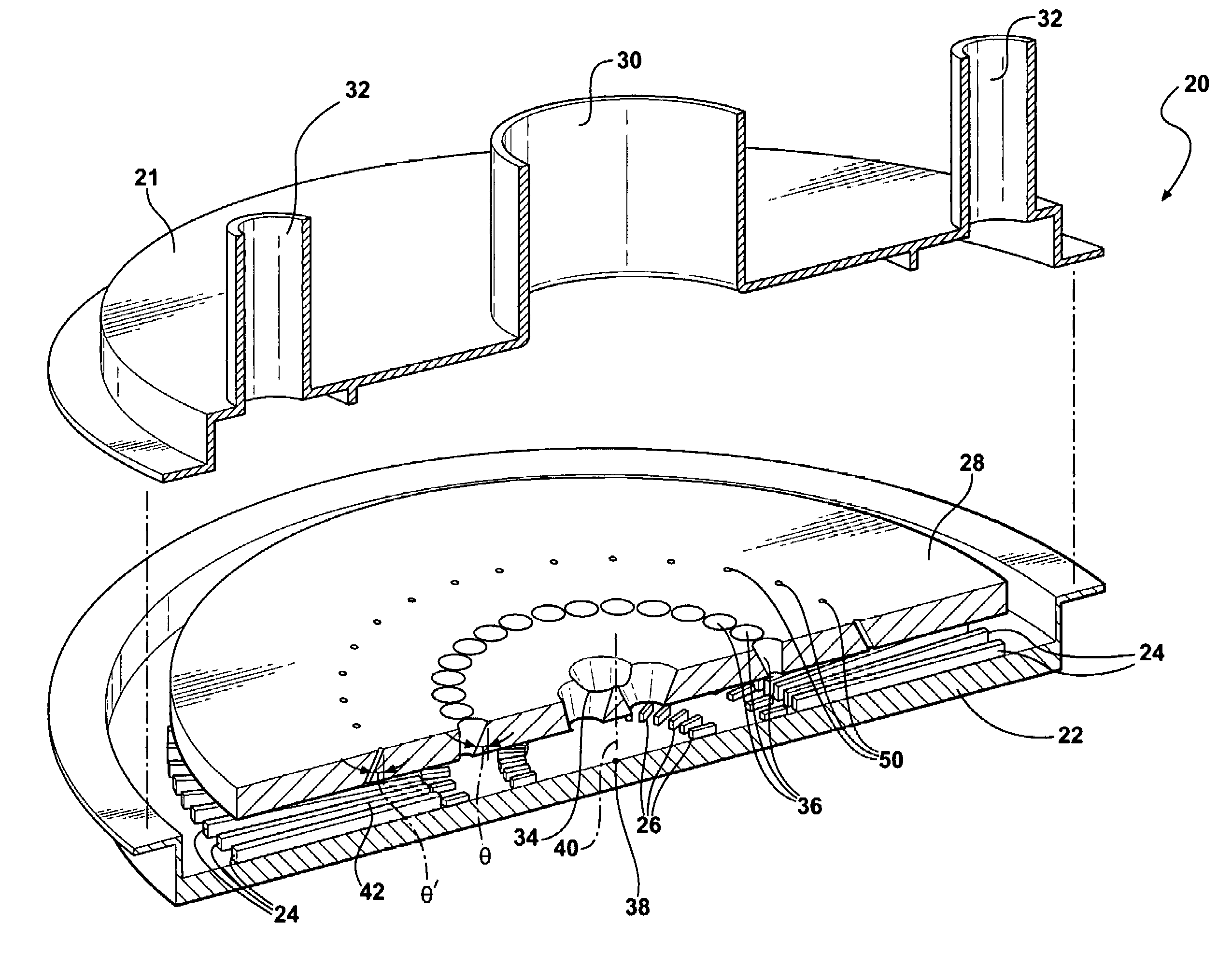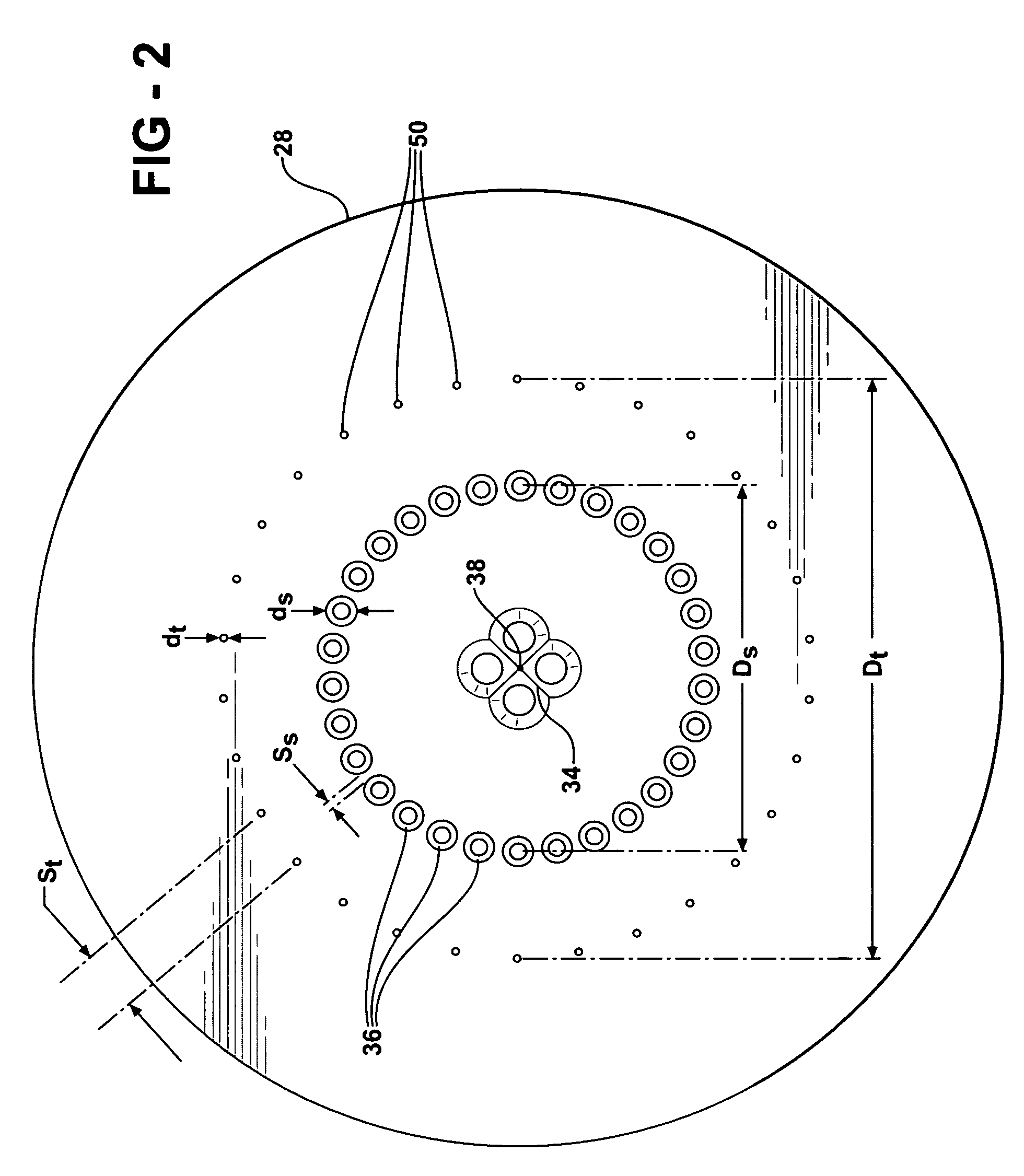Impingement cooled heat sink with low pressure drop
a heat sink and heat sink technology, applied in the field of heat exchangers, can solve the problem of relatively low heat capacity of air, and achieve the effect of reducing the life of the pump, low overall system pressure drop, and increasing the overall system pressure drop
- Summary
- Abstract
- Description
- Claims
- Application Information
AI Technical Summary
Benefits of technology
Problems solved by technology
Method used
Image
Examples
first embodiment
[0035]In the first embodiment shown in FIG. 1, the housing 20 and the nozzle plate 28 are circular in shape. The inlet 30 enters the housing 20 at the center 38 of the housing 20. Two outlets 32 are disposed across from each other on opposite sides of the circular housing 20 with the inlet 30 equidistant from each of the outlets 32. In other words, the inlet 30 and both outlets 32 are positioned along a single line with the inlet 30 being the midpoint and the outlets 32 being the endpoints.
[0036]A plurality of low fins 26 extend radially from the center 38 and are spaced radially from the center 38 and radially outward of the center 38. Similarly, a plurality of high fins 24 extend radially from the center 38 and radially outward of the center 38. The high fins 24 and low fins 26 are aligned outwardly from the center 38 and are spaced from the center 38 such that the low fins 26 are closer to the center 38 than the high fins 24. The nozzle plate 28 extends across the center 38 of th...
second embodiment
[0039]In the second embodiment shown in FIG. 3, the housing 20 and the nozzle plate 28 are rectangular in shape. The inlet 30 enters the housing 20 at the center 38 of the housing 20. Two outlets 32 are disposed across from each other on opposite sides of the rectangular housing 20. The nozzle plate 28 extends across the center 38 of the housing 20 and forms a fluid chamber 44 and a fin chamber 42, both rectangular in shape. The primary nozzle 34 is disposed at the center 38 of the nozzle plate 28. The primary nozzle 34 is elongated and defines an elongated slot 52. The primary nozzle 34 extends through the center axis 40 of the nozzle plate 28 and into the fin chamber 42. Alternatively, the elongated nozzle can comprise an array of nozzles 54 with each nozzle defining a conical bore.
[0040]The primary nozzle 34 in the second embodiment includes converging side walls 56 and end walls 58 that extend from the inlet 30 and through the nozzle plate 28. Additionally, the primary nozzle 34...
PUM
 Login to View More
Login to View More Abstract
Description
Claims
Application Information
 Login to View More
Login to View More - R&D
- Intellectual Property
- Life Sciences
- Materials
- Tech Scout
- Unparalleled Data Quality
- Higher Quality Content
- 60% Fewer Hallucinations
Browse by: Latest US Patents, China's latest patents, Technical Efficacy Thesaurus, Application Domain, Technology Topic, Popular Technical Reports.
© 2025 PatSnap. All rights reserved.Legal|Privacy policy|Modern Slavery Act Transparency Statement|Sitemap|About US| Contact US: help@patsnap.com



